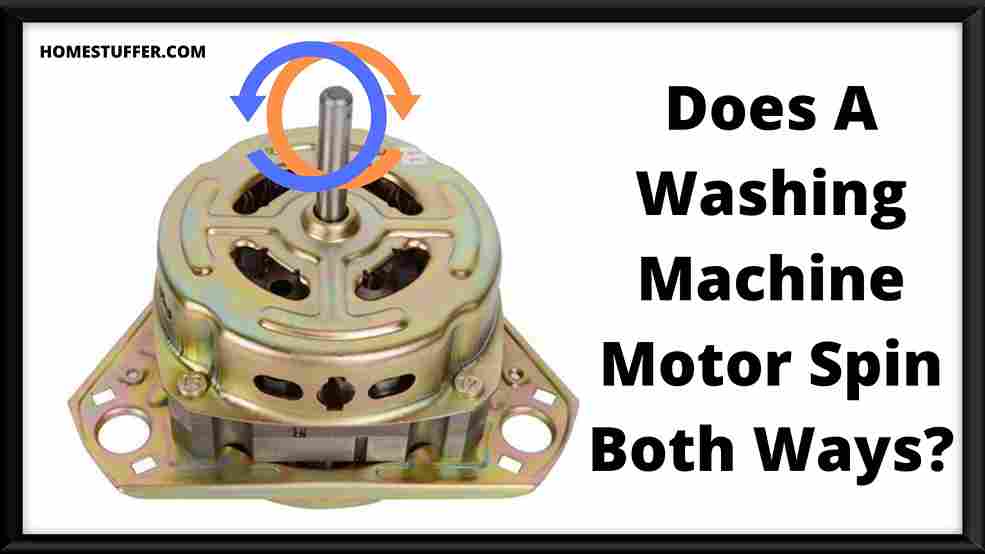The drum of the washer spins to wash clothes effectively, but do you know does a washing motor spin both ways?
A motor inside the machine is the central part that helps the washing tub to spin. However, we cannot see motor spin motion until we look inside the appliances.
A washing machine motor spins both ways; forward and reverse. The drum inside the machine needs both ways of rotation to remove dust and particles from the fabric. If the motor goes bad, it might cause problems in the spin direction.
Let’s dive into the guide to understand how the washer motor spins and why it rotates in both directions!

Table of Contents
What makes the Pulsator of Washing Machine rotate Clockwise and Counterclockwise?
New generation washer models have a pulsator named part at the base of the drum that rotates clockwise and counterclockwise. This rotation prevents tangling growth in clothes. The motor inside the washer and Mechanism cause clockwise and anticlockwise rotation of the Pulsator.
Unfortunately, you cannot find this Mechanism in old washers. Specialty in washers run on gas. The pulsator doesn’t rotate until you turn on the agitation cycle. Moreover, if you overload the drum, it affects the working of the Pulsator. Overloaded drums cause pressure on the Pulsator and its internal parts.
Pulsator first rotates clockwise for 2 – 3 seconds and then rotates anti-clockwise. An electric motor attached to belts rotates a shaft connected to a pulsator and when the shaft rotates it creates a forward and reverse cycle.
Clothes inside the drum need friction to reduce dirt from garments. If the drum or pulsator only spins in one direction, it doesn’t clean garments effectively.
What is the Purpose of Spin in Washing Machine?
A washing machine is a useful device, almost every household owns it. Its working mechanism includes many parts and each server works for each purpose in working.
A washing drum requires rotation to create friction and the motion of water. As water has clothes inside the drum, water passes through the fabric and removes dust particles from garments.
Spic cycle generally extracts dampness from fabric at the end of the wash cycle. The motor creates RPM and it rotates parts under the drum at a specific number of rpm and this rotation removes moisturizer from the clothes.
Most washers have an option to select the speed of the spin. It is important to check the fabric type before setting the spin cycle rpm. Fabrics such as silk, soft cotton, lace, and wool are likely to wear when the machine runs a high-speed spin cycle. If you spun these fabrics at 1600rpm, these fabrics can wear and tear.
To Summarize
Every washing machine spin motor in both way to create motion in clothes and this call spic cycle. At the end of the wash cycle, moisturizing from your wet clothes can be reduced by a spin cycle. The motor shaft rotates in the opposite direction when the flow of current switches of force.
